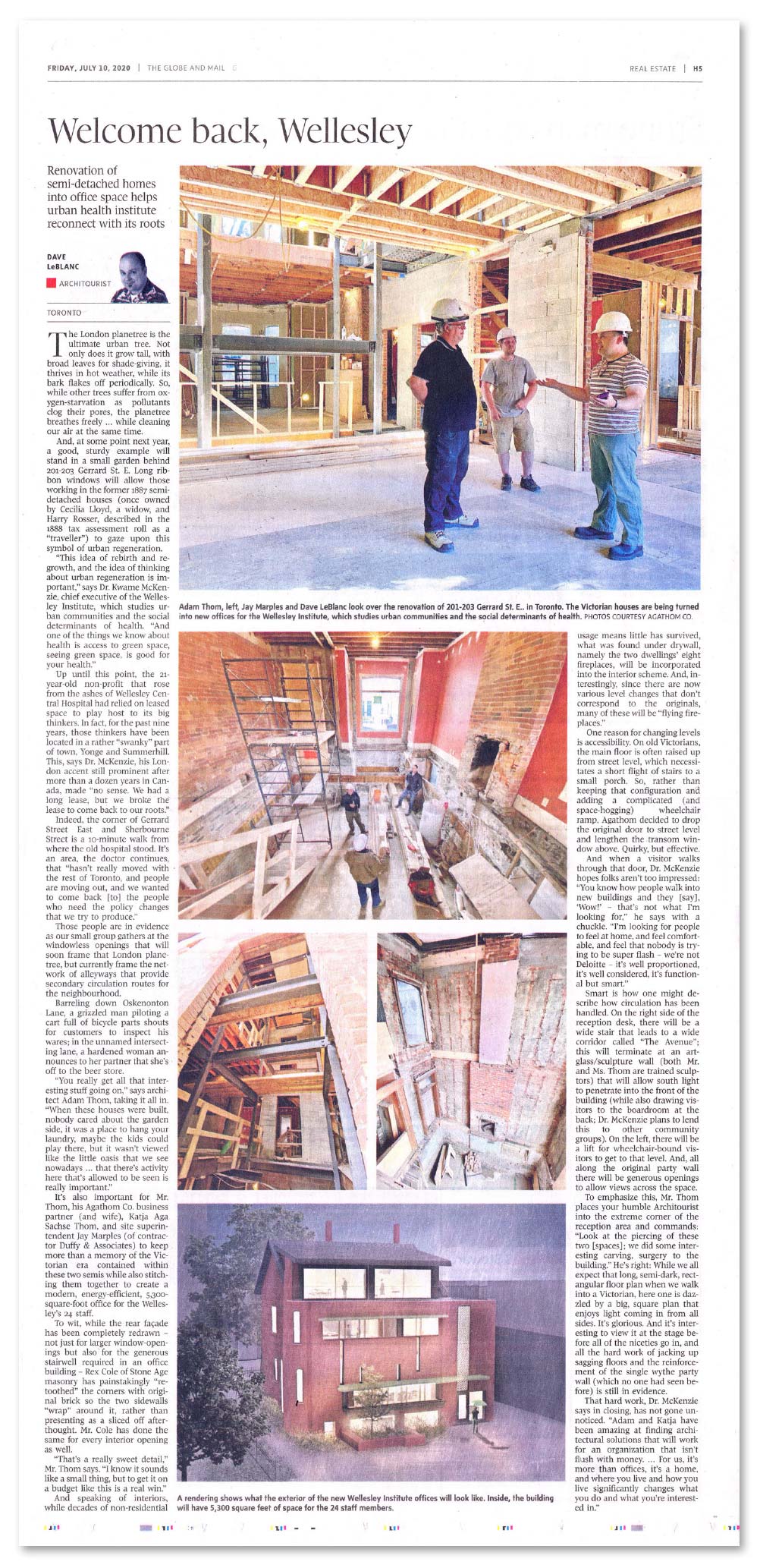Wellesley Institute in The Globe and Mail 2020

Wellesley Institute in the Globe and Mail
Dave LeBlanc—The London planetree is the ultimate urban tree. Not only does it grow tall, with broad leaves for shade-giving, it thrives in hot weather, while its bark flakes off periodically. So, while other trees suffer from oxygen-starvation as pollutants clog their pores, the planetree breathes freely … while cleaning our air at the same time.
And, at some point next year, a good, sturdy example will stand in a small garden behind 201-203 Gerrard St. E. Long ribbon windows will allow those working in the former 1887 semi-detached houses (once owned by Cecilia Lloyd, a widow, and Harry Rosser, described in the 1888 tax assessment roll as a “traveller”) to gaze upon this symbol of urban regeneration.
“This idea of rebirth and regrowth, and the idea of thinking about urban regeneration is important,” says Dr. Kwame McKenzie, chief executive of the Wellesley Institute, which studies urban communities and the social determinants of health. “And one of the things we know about health is access to green space, seeing green space, is good for your health.”